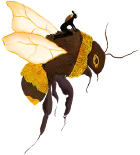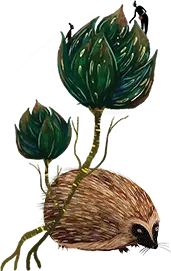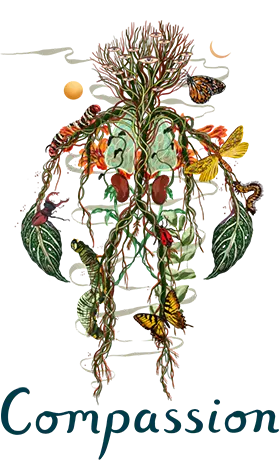
EMOTIONS: Inspiration Gallery

INSPIRATION GALLERY
Nature Reflections Challenge
Let’s connect to Nature through emotion.
We’re asking people to write or record their reflections and send them to us to become part of our Community Journal.
Find more details and submit your contribution
Be inspired to explore and record your own emotional response to Nature.
Here are a few classic Nature poems that explore Joy, Love, Sadness, Fear and Awe.
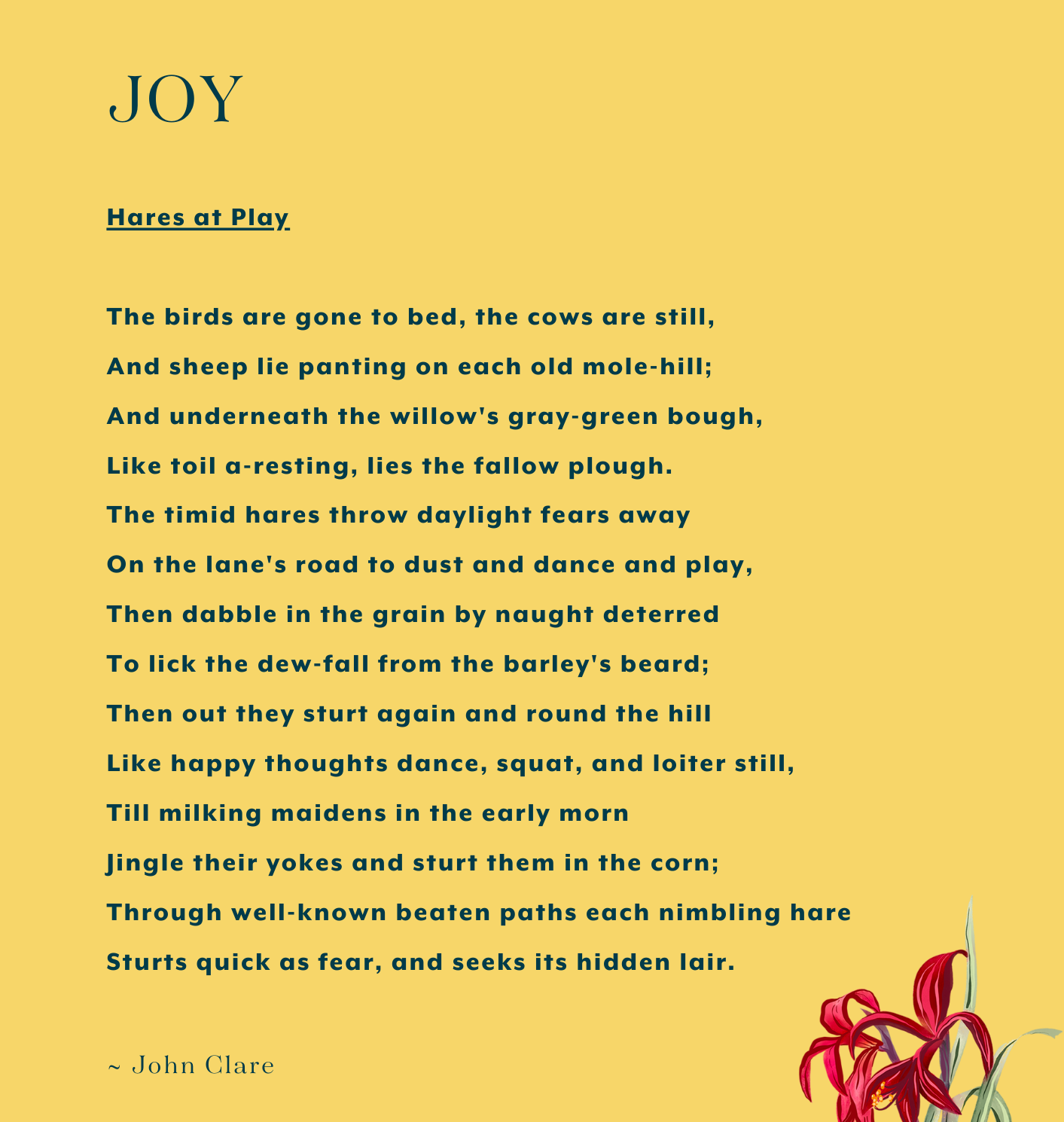
“Hares at Play” by John Clare (1793-1864) is a charming and vivid depiction of hares frolicking in the open fields. It does a wonderful job of capturing the carefree joy and freedom that can be felt in Nature when we are able to let all other worries and emotions fall away.
There is something especially lovely about the fact that this joyous scene is under the cover of darkness, unseen. It is purely for themselves.
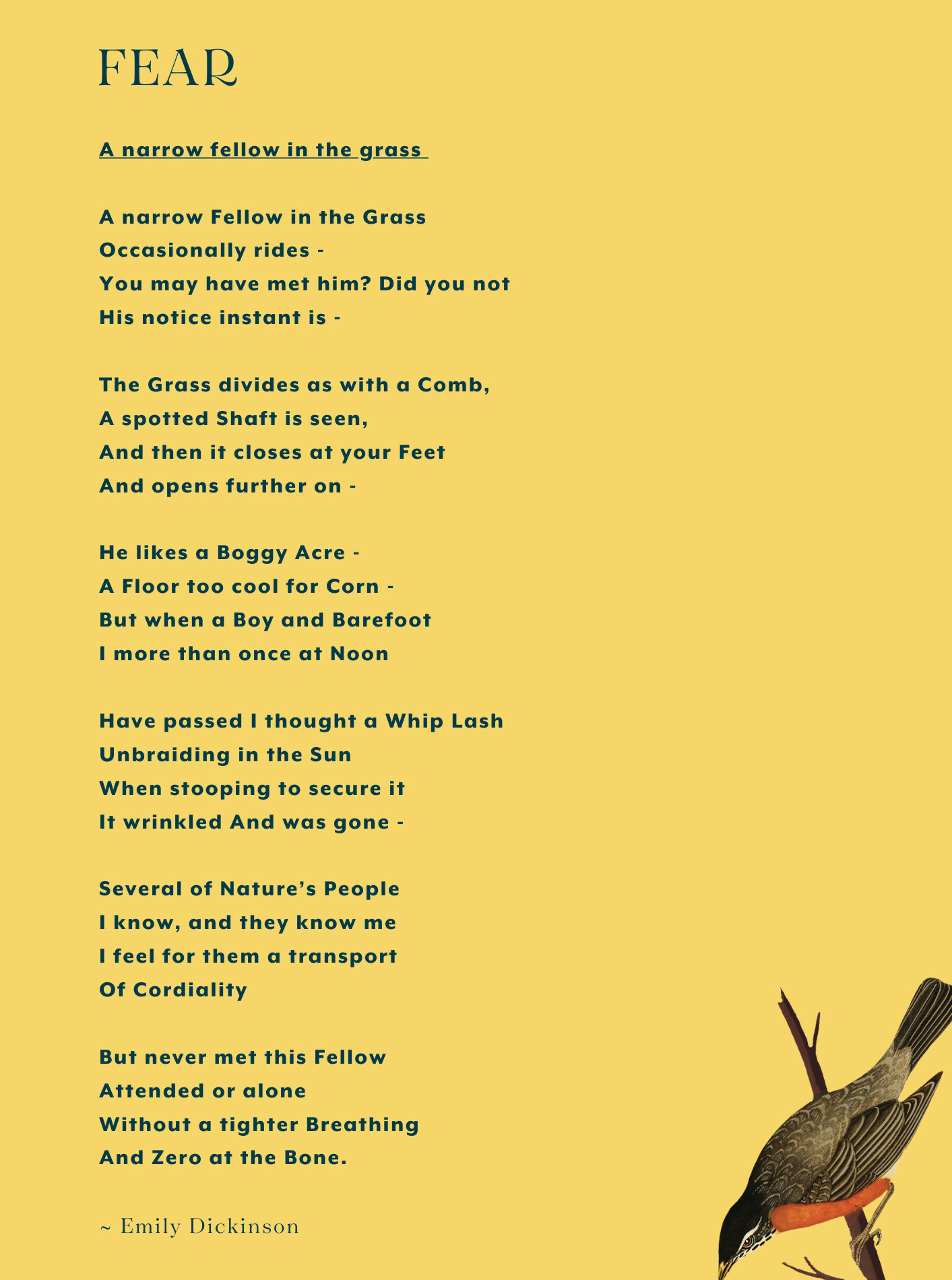
“A Narrow Fellow in the Grass” by Emily Dickinson (1830 – 1886) wonderfully describes an encounter with a snake in a meadow. It captures that thrill and sense of unease that such experiences can make us feel, especially when taken by surprise.
Our emotions in Nature are often not clear cut, and can be both unsettling and exciting. In fact we often feel most alive when faced with danger.
Through precise imagery and a sense of tension, the poem explores that fascination and fear we have of snakes, as well as the unpredictable and sometimes unsettling aspects of Nature.
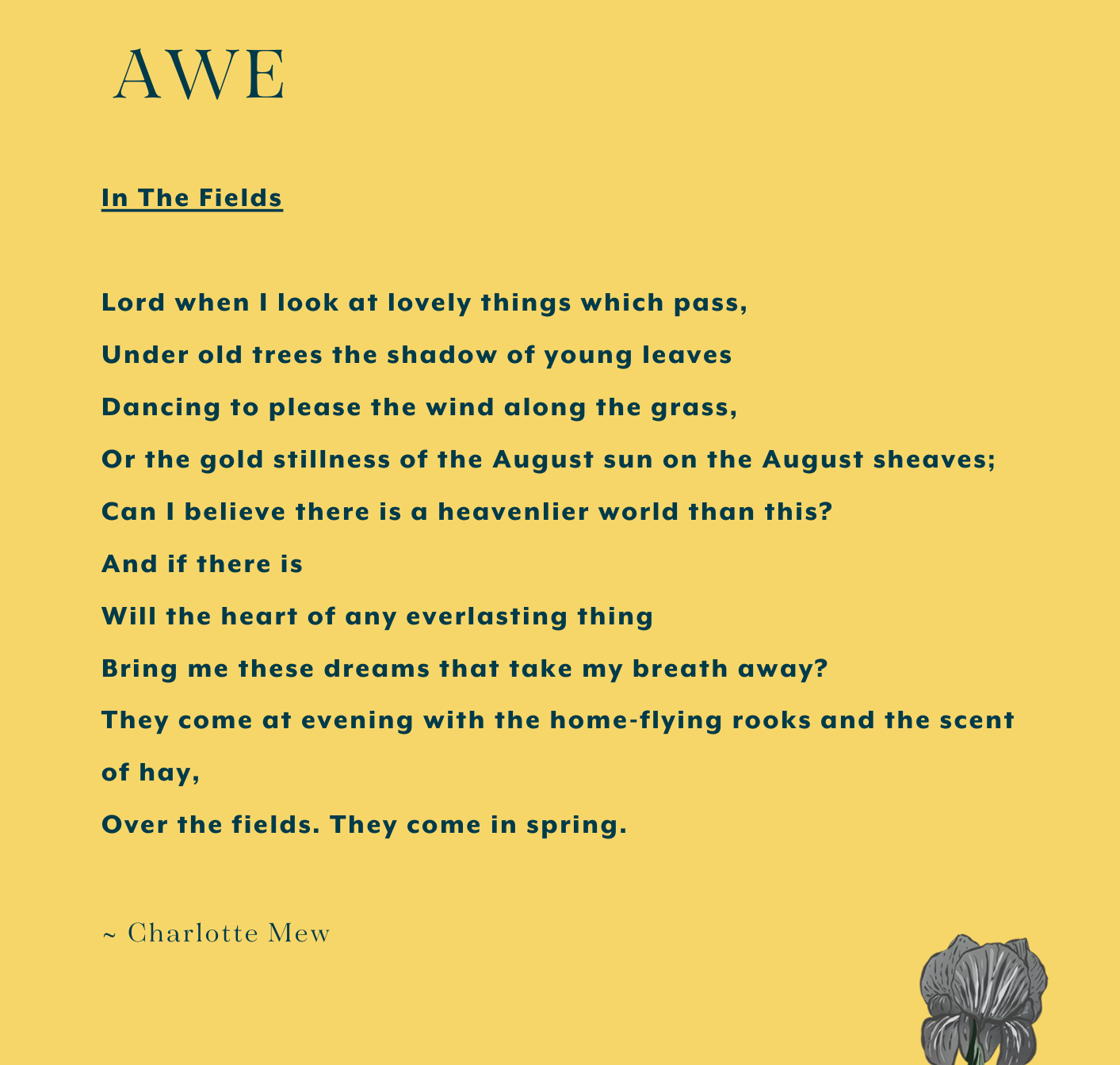
“In the Fields” by Charlotte Mew perfectly encapsulates the awe and almost heavenly loveliness of Nature, using sensory details, like the “shadow of young leaves” and the “scent of hay,” to bring the scene to life. The rhythm and rhyme of the words also creates a beautiful sense of movement and flow.
It really captures those moments when your breath is taken away by the beauty of a scene or moment in Nature and when you are overcome by awe and gratitude. Some are blessed to regularly feel such things, some may never have experienced it, yet we all deserve the opportunity, for it is part of our ancient human condition.
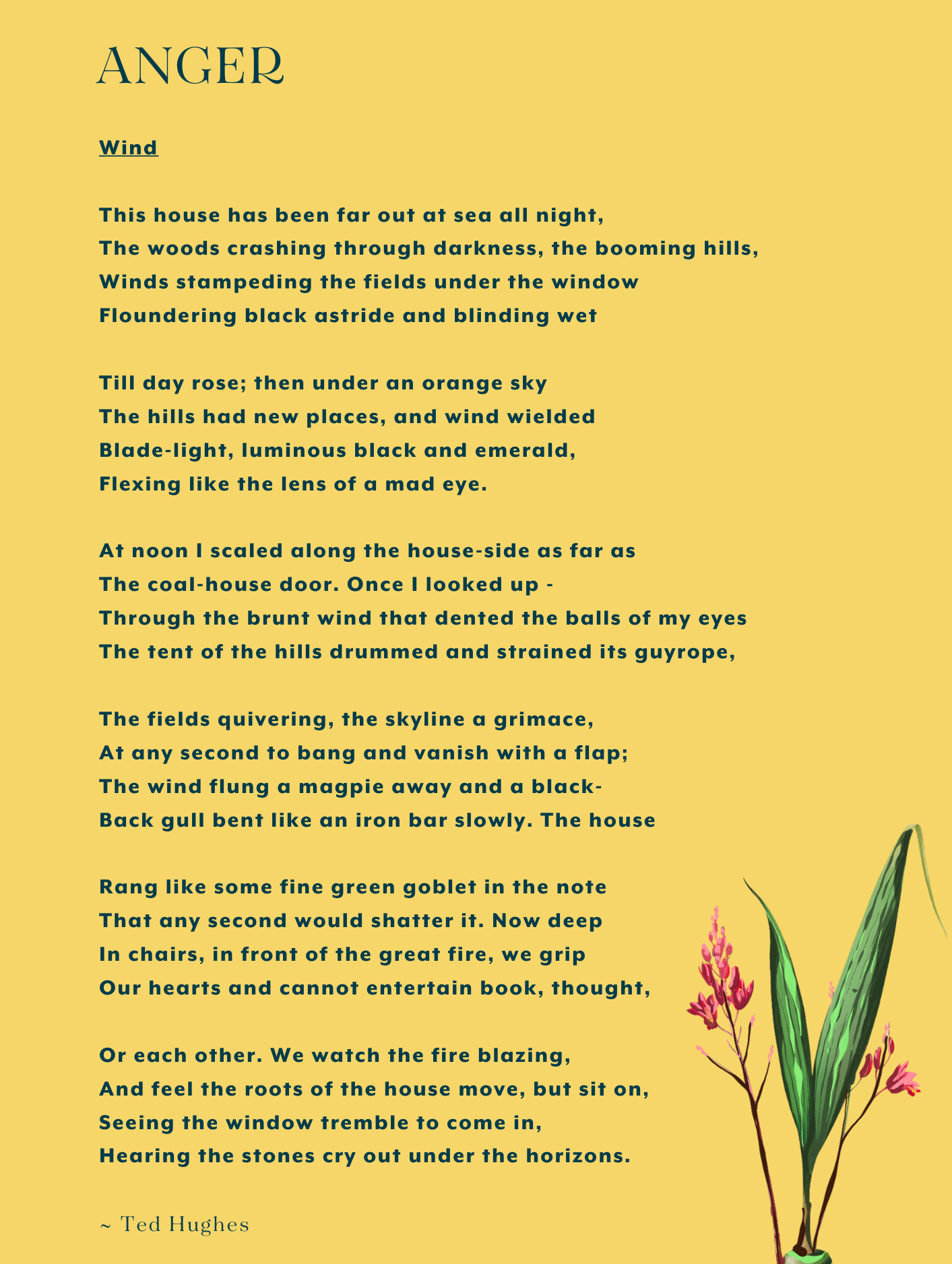
There are a good deal of emotions present in Ted Hughes’ poem “Wind”, including awe and fear as the the wind shakes the very foundations of the house, bending trees and altering the landscape. But it is the fury and anger of the wind itself which is most evocative.
Sometimes Nature elicits a clear emotion in us, but sometimes it serves as a wonderful metaphor, or representation of strong emotions, to help us understand or work through these feelings. The sort of power, force and chaos, brought to life through the intense imagery and dynamic language, can sometimes be intoxicating. At other times, it is a reminder of our own vulnerability and Nature’s unstoppable power. It leaves us both terrified and in awe.
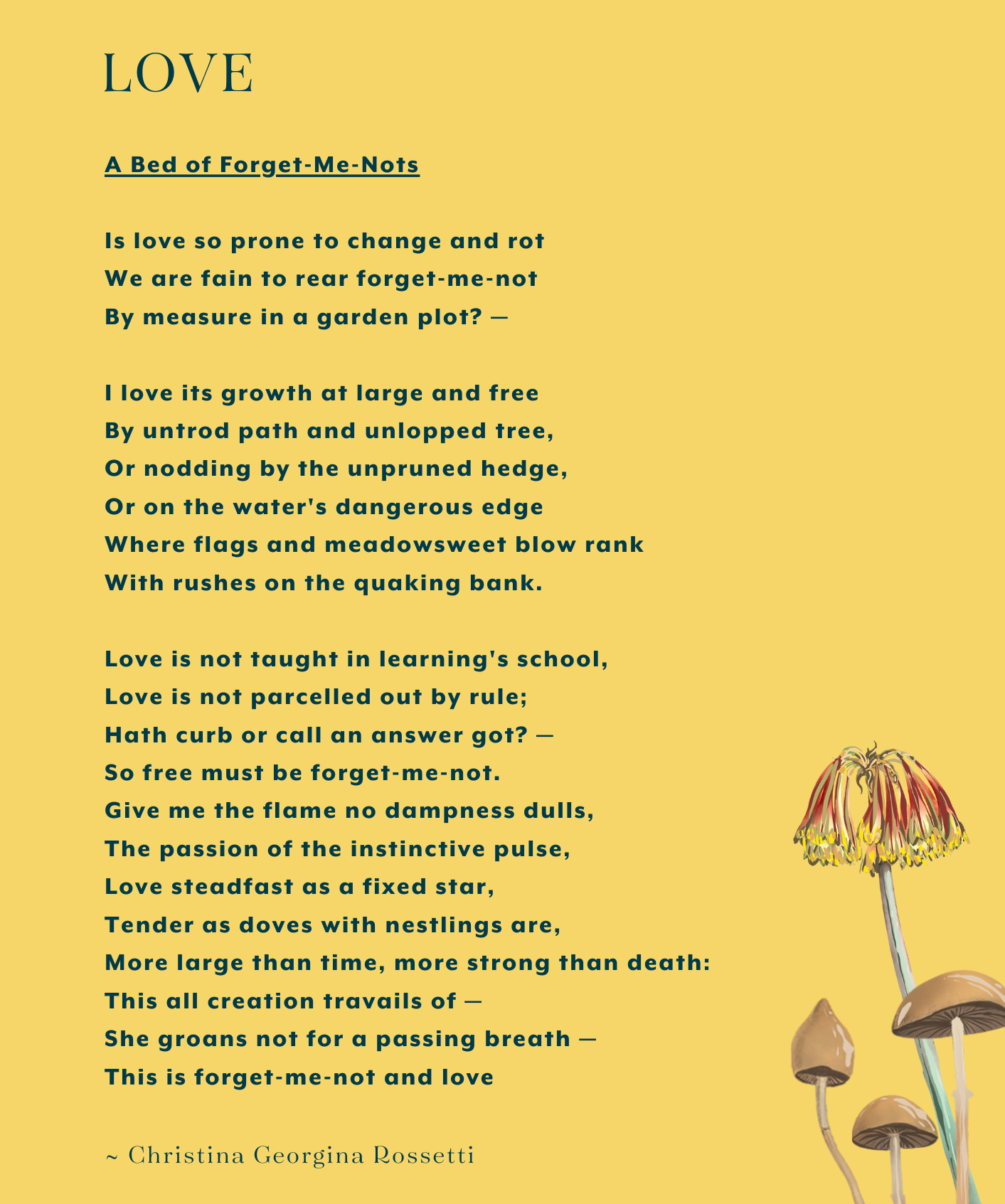
“A Bed of Forget-Me-Nots” by Christina Rossetti (1856) explores themes of memory, love, and loss, using the forget-me-not flower as a symbol of remembrance and enduring affection.
According to the poem, Love is not something that can be contained or controlled, but that is wild, vivid and free, like the blue forget-me-not flower. Even in the passage of time, as things grow and rot, the feelings and memories are “steadfast as a fixed star”, much like the dainty gold and white star in the centre of the flower itself.
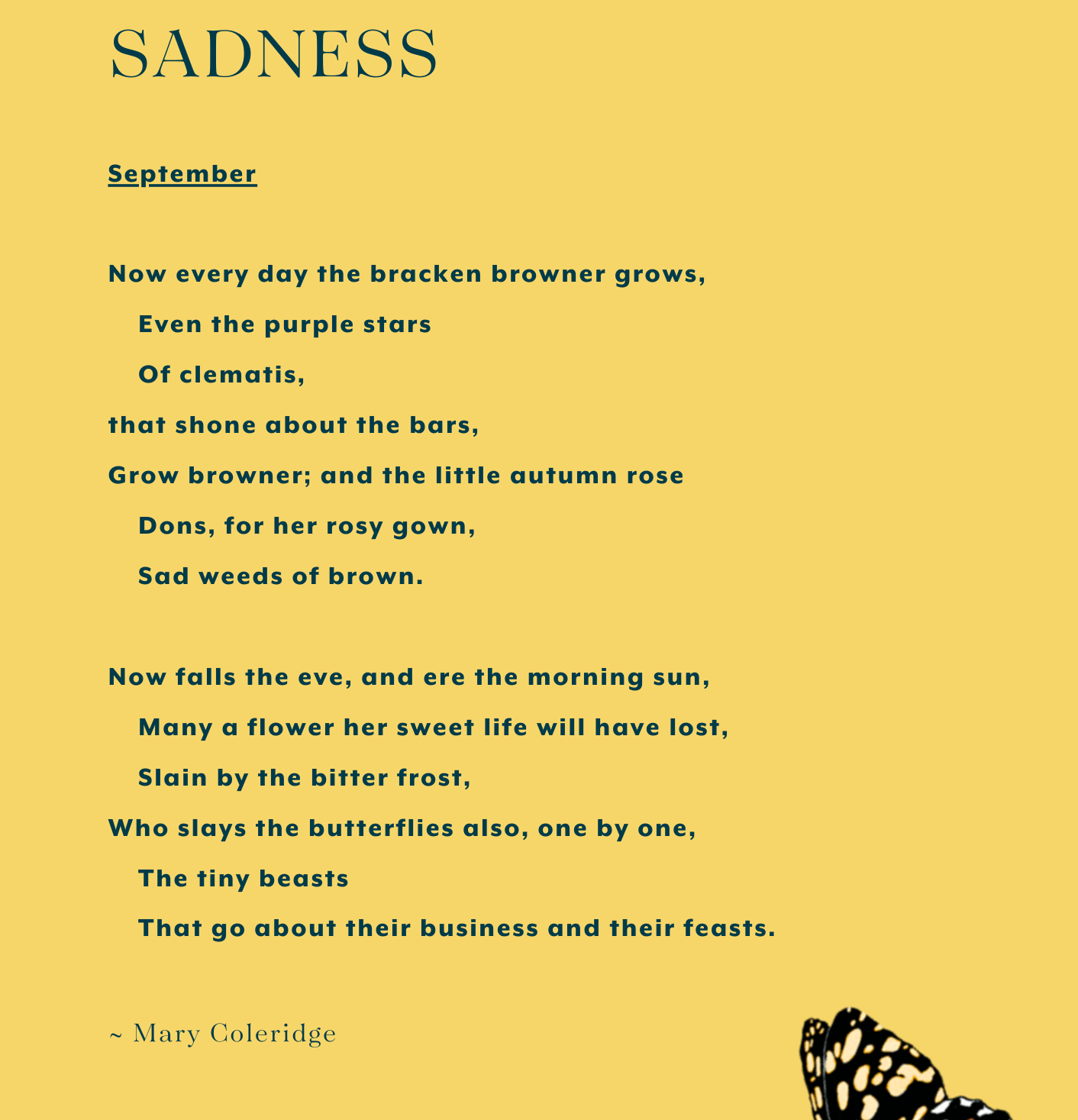
Mary Coleridge’s “September” laments the passing of time and transition from summer into autumn, noting the natural markers of the change in season, particularly the loss of vitality, death and decay in plant and animal. It is a dramatic, melancholic take on the loss of summer, where flowers loose their life and butterflies are slain, with the autumn rosing donning her “sad weeds of brown”.
I guess we all have days like this, where it all looks drab and sad, and using Nature to help us reflect on or symbolise these feelings of loss and grief, can perhaps bring some comfort, or make us feel a little less alone.

